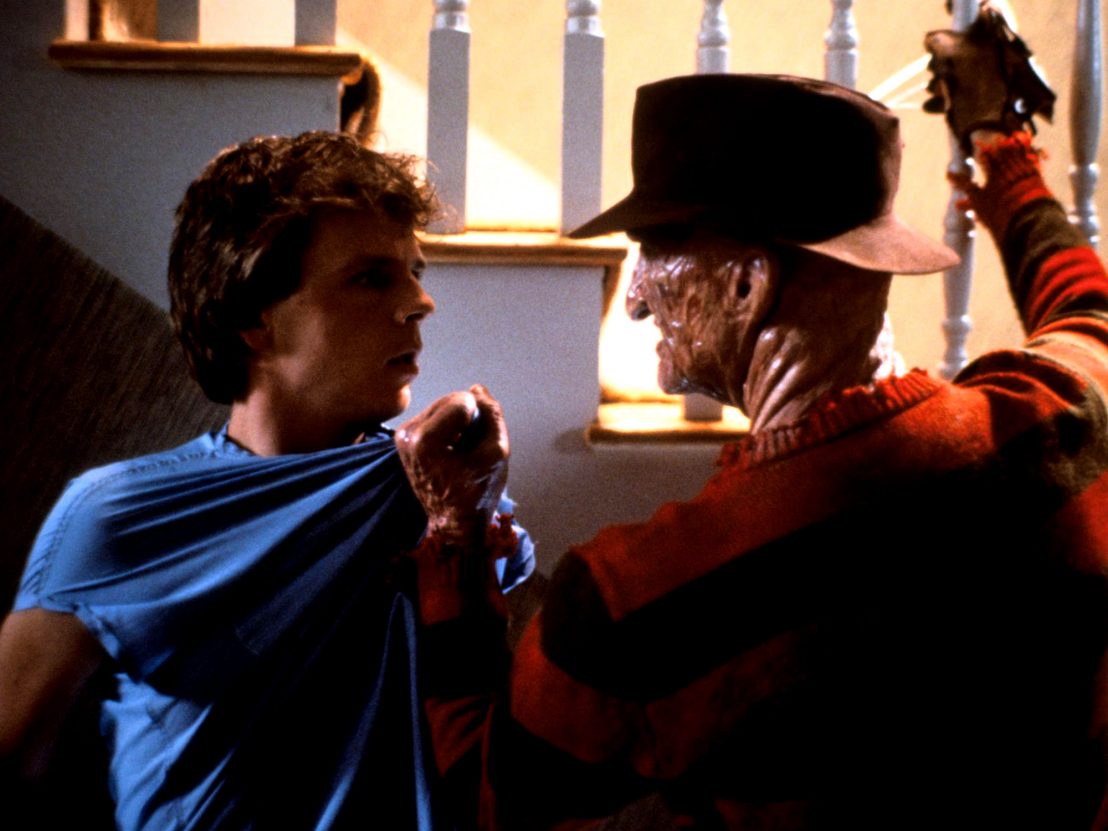
It should have been the role of a lifetime for 21-year-old Mark Patton, but playing the lead in A Nightmare on Elm Street 2: Freddy’s Revenge turned into a real-life nightmare for the budding actor – so much so that he ended up quitting Hollywood altogether.
“I saw so many of my friends dying [of AIDS], I just didn’t want to keep on subjecting myself to the pain of Hollywood,” the now 55-year-old actor tells LWLies. “To be a gay actor then was to either hide who you were or just play a complete gay stereotype so I quit as I didn’t want to be in a cage. My experience on A Nightmare on Elm Street 2 just reinforced to me how Hollywood was disgusted by gay people.”
Back in 1985, Patton was cast as Jesse Walsh, the teenager who is tormented by his peers for being too feminine just as Freddy Krueger starts to invade his dreams, using Jesse as a vessel through which to kill other kids. Although director Jack Sholder’s horror sequel is in many ways a fairly generic slasher film, the gay themes it explores are surprisingly radical.
A lot of A Nightmare on Elm Street 2’s queer subtext may seem clumsily-handled by today’s standards, yet it’s remarkable that a movie like this existed at all at the height of the AIDS epidemic. Jesse is essentially horror cinema’s first male scream queen, while the film also sees the teenager entering a drag bar, his homophobic coach being whipped on the buttocks by Krueger, as well as persistent homoerotic encounters between Jesse and the clawed bogeyman (at one point the former complains that he can “feel something inside of me”).
This is all with the benefit of hindsight, of course: screenwriter David Chaskin has stated in interviews that he actually intended to show how sexually confused teenagers can be led away from temptation by a “good woman”, with Krueger representing the demonic allure of homosexuality and Kim Myers’ romantic interest Lisa as Jesse’s wouldbe saviour.
“I had just come off playing a transperson in a Robert Altman film [Come Back to the 5 & Dime, Jimmy Dean, Jimmy Dean], so I wasn’t afraid to play a gay character,” Patton remembers, “but I would have liked as a gay actor to have some license in what was happening. I just had to do my best with the problematic material. This was a time where women didn’t want men to be weak, but I knew I at least wanted Jesse to have a fragile scream. If I was going to do this movie then it was important to at least show a different kind of masculinity.”
Amid lukewarm reviews and a backlash from some fans who took issue with the film’s gay themes, Patton says he was “thrown under the bus” by the producers, who were quick to distance themselves from any perceived queer subtext. It didn’t matter that Patton was just responding to Chaskin’s script — he was an easy target, especially at a time when homophobia was rife in American society.
“Robert Englund [who plays Freddy Krueger] definitely knew [about the gay subtext],” says Patton. “For the scene where Freddy meets Jesse for the first time he suggested putting his claws in my mouth to play up to the homoeroticism of the writing. But certain people didn’t want to own up to it as they were scared it would ruin their careers as Hollywood was so homophobic back then.”
With the advent of the internet, the film gained a reputation as one of the gayest horrors of the 1980s, and Patton could only watch on as he became a punchline and a victim of abuse online. Eventually, he found the courage to reclaim the narrative. “They wanted Jesse’s gayness to make the audience feel sick to their stomach,” he explains. “Remember that his gay sensibilities were edited so the audience would laugh, but because I became a scapegoat, it was important to change that perception.
“I went on the road to horror conventions and showed people how Jesse could actually be a powerful tool to empower young people. Hundreds of people tell me they saw Jesse standing up to Freddy and screaming effeminately back when they were a confused child, and it made them feel empowered by their own sexuality. Those kind of stories make my day.”
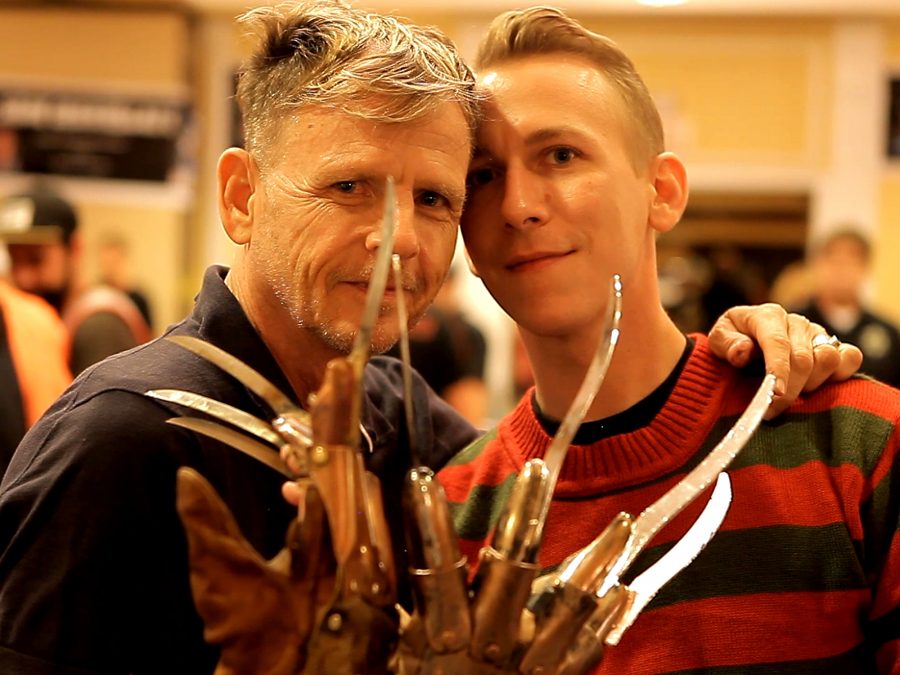
An excellent new documentary entitled Scream Queen, directed by Roman Chimienti and Tyler Jensen, has been cathartic for the actor. In it, Patton describes his new life in Mexico, where he works as an interior designer, while also reflecting on his decision to leave Hollywood. “There were no openly gay actors,” he says, “no gay anything. If you were gay you’d be fired. The word ‘faggot’ was used openly in pop culture. If there was a gay casting director, they wouldn’t even cast me for fear of being associated with someone who was gay and subsequently being found out.”
Patton goes so far as to confront Chaskin in the documentary, yet ultimately it shows how he and the LGBT+ community are reclaiming A Nightmare on Elm Street 2 as a progressive film about sexual identity, celebrating the way Jesse stands up to his bullies. For many young gay men, the film was the first time they saw themselves represented on screen, and Scream Queen stresses how the drag bar scene helped to normalise gay sex, and why watching Jesse scream like a Hitchcock blonde made them feel more comfortable in their own skin.
“The documentary only really uses A Nightmare on Elm Street 2 as a backdrop,” Patton insists, “the real story is what I went through and how I managed to come out of it stronger. Its purpose is to show what gay actors had to put up with back in 1985. My mission is for young gay men to see what I experienced and learn from it so it never happens again. I want to armour them up.”
Today Patton is much happier being associated with A Nightmare on Elm Street 2, which is regularly screened at LGBT+ events. So, does he consider Jesse a gay icon? “Oh, absolutely – because he’s a survivor. The LGBT+ community have made him into one. You can’t deny it; he’s still here and we’re talking about him 35 years later. He shows how young gay kids can overcome obstacles. Because of this documentary, I finally feel good about playing him again.”
Scream Queen is currently playing at film festivals across America. For more information visit screamqueendocumentary.com.
Published 31 Oct 2019
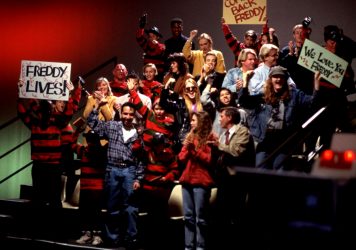
By Thomas Hobbs
The director’s satirical 1994 horror explores what happens when society embraces its worst monsters.
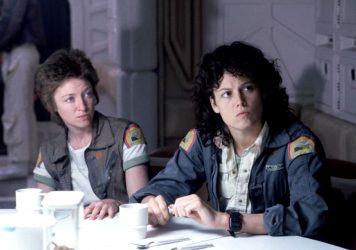
By Thomas Hobbs
The revelation that Lambert is a trans woman transforms what we know about Ridley Scott’s sci-fi horror.
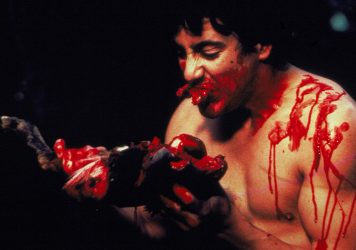
By Anton Bitel
Romance, tragedy and horror combine to potent effect in director John Landis’ iconic 1981 feature.